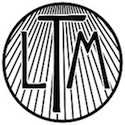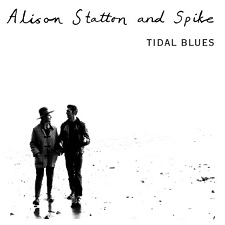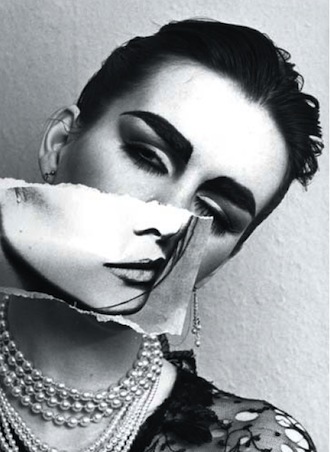Devine and Statton \ Biography
As the Eighties slipped into the Nineties, not all was loved-up bagginess from Madchester, or noise and disaffection from the environs of Seattle. Ian Devine takes up the story:
"After Linder and I drew Ludus to a close - at least temporarily - in 1984, we went our separate ways." Ah, Ludus. Strange asymmetric rhythmical music, Linder Sterling's voice and lyrics sparking off Devine's wayward jazz leanings. Existed in the midst of the Manchester post-punk scene from 1978, delighted some of us - made us dream odd flighty visions, seduced by the groove and uncompromising vibe. Morrissey, who collaborated with Devine on pre- and proto-Smiths material, was quite a fan, you know.
"After Ludus, I got into a few projects in South Wales." One of them was Heb Gariad, an abrasive Welsh language trio. They featured Devine as vocalist, and made one record with Anhrefn Records. "It was post-Heb Gariad," Devine says, referring to the sequence of events that led to his collaboration with former Young Marble Giants singer Alison Statton. "I felt a song coming on, I suppose. I wanted to write something more laidback and poppy and timeless, and didn't think my voice suited. I had a relationship with Les Disques du Crépuscule and thought they might not want a grotty rock'n'roll band from Wales. So I thought of Alison Statton - who better? We were living barely a few miles away from each other in Cardiff. Geographically, it was interesting. Historically, it was interesting. She was in her own musical limbo at the time, Weekend having ended in 1983. She went for it once she heard the songs. I took it back to Crépuscule, we rehearsed a few times and a couple of months later, we were doing the record."
I wrote of Young Marble Giants' solitary album, 1980's spooked and minimal Colossal Youth, that it was "strange how something so frail, so fragile and solemn, so commonplace can give off such an aura of bleakness." You could almost hear the emptying pits of Welsh mining villages as Alison sang about a girl painting her nails. Statton whispered alienation in a curiously disconnected way: the brothers Moxham provided the barest of melodic accompaniment. Young Marble Giants were followed by Weekend - a nouveau early Eighties jazz band who fleshed out the alienation with calypso and bossa nova breaks, far more enticing than that description suggests. As they disintegrated, Statton - never terribly comfortable onstage - returned to Wales, and didn't resurface until 1988 when Devine contacted her.
"Me and Alison had mutual friends. I liked her voice for what anybody would like about it - the absolute purity that I felt was the perfect vehicle for The Song. It was like a clean sheet, something you could project anything on to and it would fit. Maybe I also felt that if she sang these very personal songs, there would be an abstract quality to her voice that would create a disengaged relating of the tale, in the same way an actor would perform a spoken word CD.
"There was still a lot of fall out from the melange of influences that was Ludus, which ranged from the serial avant-garde to Brigitte Bardot - we went from A to C where most people would only go from A to B. My perception of pop had become quite European by this point, but the bossa nova of Jobim was not really an area of interest for anyone in the UK.
"So I had the Manchester tradition, Ludus and the Welsh language music scene behind me," Devine continues, "and Alison had the Young Marble Giants and the Weekend records behind her."
The pairing of Devine and Statton led to two albums of exquisite charm and elegance - 1989's deeply personal The Prince of Wales, and the following year's Cardiffians. Devine's songs and arrangements are delicate, restrained, sharply observed: never lapsing into the weepy neuroticism that usually hampers such a tender sound. Statton's intelligence and direct way with a melody help the music transcend its surroundings, lifts it into another arena altogether. Devine understands well the power of silence.
This is music for wet Sunday afternoons where one delicious, ennui-tinged hour drifts and meanders and merges into another, for bright Thursday evenings spent watching popinjays promenading down the high street, for late night coffee-fuelled insomnia.
The two albums appeared during the first flush of grunge, amid concerts bogged down by layers of feedback-deranged guitars. In such a climate, their breezy, light arrangements, European pop sensibilities and deft melodies seemed almost indecent. They stood little change of exposure, or sales. Too pan-continental years before the media deigned to recognise anything beyond its own doorstep, too sensuous at a time when noise was all. Never mind that on their cover of New Order's 'Bizarre Love Triangle' on The Prince of Wales, Devine and Statton stumbled across a feeling, indubitably timeless - as I wrote at the time, "possessed of such languid, easy beauty as to make me catch my breath in sharp relief, again and again."
It wasn't even the album's best song. "I wanted to impress upon the music world a cultural manifesto," Ian explains. "Nothing much had happened in South Wales except for a few bursts of excitement. I'd originally left Cardiff for Manchester because I'd completely burnt myself out trying to get something musical happening in late Seventies. So it was coming full circle. A lot of the reviews for the record included the line, 'Putting Cardiff on the map for the first time'.
"Alison was up for it as well, being very aware of her Welsh roots. A couple of the songs were conscious atteps to cultivate that pose. 'Turn the Aerials Away From England' was for me a new Welsh national anthem, with a subtler declaration of intent. The title, after all, concerned television reception in the Valleys." He laughs. "But no one has ever heard it except for 50 people in Belgium, and maybe a few more in Japan. That was the strange thing - no one could ever buy those records in South Wales. And the only live dates were a few in Benelux in April 1989, and Japan in 1991."
Cardiffians ("I met people in Japan who had visited Cardiff because of Cardiffians", remarks Devine), released in 1990, added New York jazz musicians Curtis Fowlkes and Roy Nathanson, plus Tom Waits guitarist Marc Ribot. New Order's Peter Hook also contributes occasional bass. Once more the sound was sparse and delicate without ever seeming wimpy or cute. 'Hideaway' and the Crystal Gale cover, 'Don't It Make My Brown Eyes Blue' both possess a delightful lightness of touch, reminiscent of several of Devine and Statton's Crépuscule label-mates and Weekend themselves. Lyrics could be bitter, but never self-pitying. Again, Statton's voice is stunning in its purity of touch.
"The intention behind the two records was very different," Devine says. "The first record was a composite of one's life and one's take on the world, from history to culture to family to personal and back again. The second was more of a way of trying to present a musical backdrop to the city, a paean to Cardiff. The first was catharsis, the second was all to do with palettes.
"Benoît Hennebert [Crépuscule design genius] was a massive influence on these albums. I was always trying to seek his approval, go the extra yard and attep to write songs as perfect as I could make them. There was something Belgian about it; you had to go a long way truly to please Crépuscule. So I wanted to write an album that would meet the criteria for what Benoit would consider perfect pop: I finally won his approval when he said 'Hideaway' is that song.
"Listen to me," he laughs. "I sound like Gloria Swanson in Sunset Boulevard. It was always my intention to produce a triptych of albums with Alison. I was slightly disconcerted that it never panned out, that we didn't meet the magical number. I miscalculated, but I would have been happy with the first one, to tell the truth."
Since then, Alison has recorded two studio albums with Weekend cohort Spike Williams - Tidal Blues (1994) and The Shady Tree (1997), plus the live set Maple Snow. All originally appeared in Vinyl Japan, and have now been reissued by LTM. In 2001 Ian reunited with Linder Sterling for the art installation soundtrack Requiem, while Ludus returned for two triumphant dates at the Royal Festival Hall in London in 2004 as part of the Meltdown season curated by Morrissey.
Everett True
September 2005







![DEVINE & GRIFFITHS WHEELS TO GET TO HEAVEN [ANHREFN RECORDS 017]](../images/devinegriffithscover.jpg)
![LES DISQUES DU CREPUSCULE [LTMCD 2517]](../images/ltmcd2517.jpg)